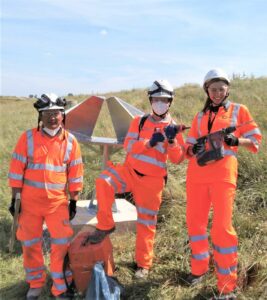Last week one of our environmental teams were onsite at Canary Wharf completing acoustic consultancy work for our client in order to optimise their business operations.
The client requested that SIXENSE undertake noise and vibration level measurements and offer analysis and advice based on the acquired results, allowing them to make clearer, more decisive choices moving forwards.
SIXENSE offer a wide range of acoustic consultancy solutions for any size of project. With a team of experienced acousticians, airquality professionals and vibration experts available at every stage of your project, SIXENSE can assist with any potential Acoustic Consultancy needs.
We strive to provide objective and unbiased diagnostics and recommend solutions that strike the right balance between risks and goals, avoiding the trap of implementing excessive precautions which can often be unjustified and costly.
If you need to find out what solutions SIXENSE can offer for your NVAQ concerns, contact us and start a discussion with one of our professionals!








 The advantages of a multidisciplinary monitoring and engineering company are being realised by our client on the
The advantages of a multidisciplinary monitoring and engineering company are being realised by our client on the